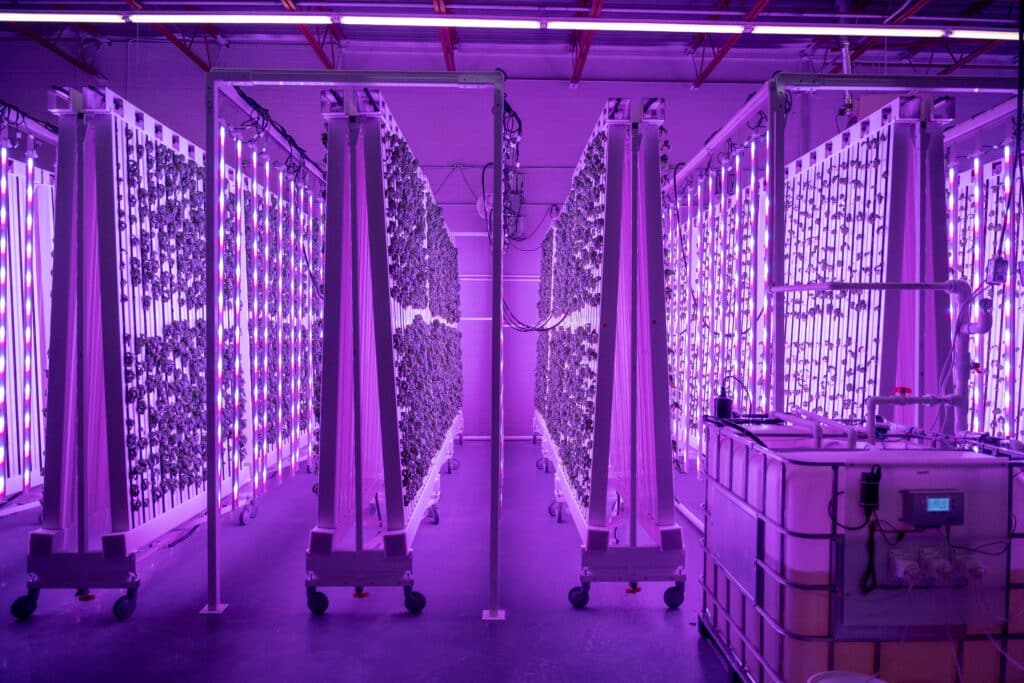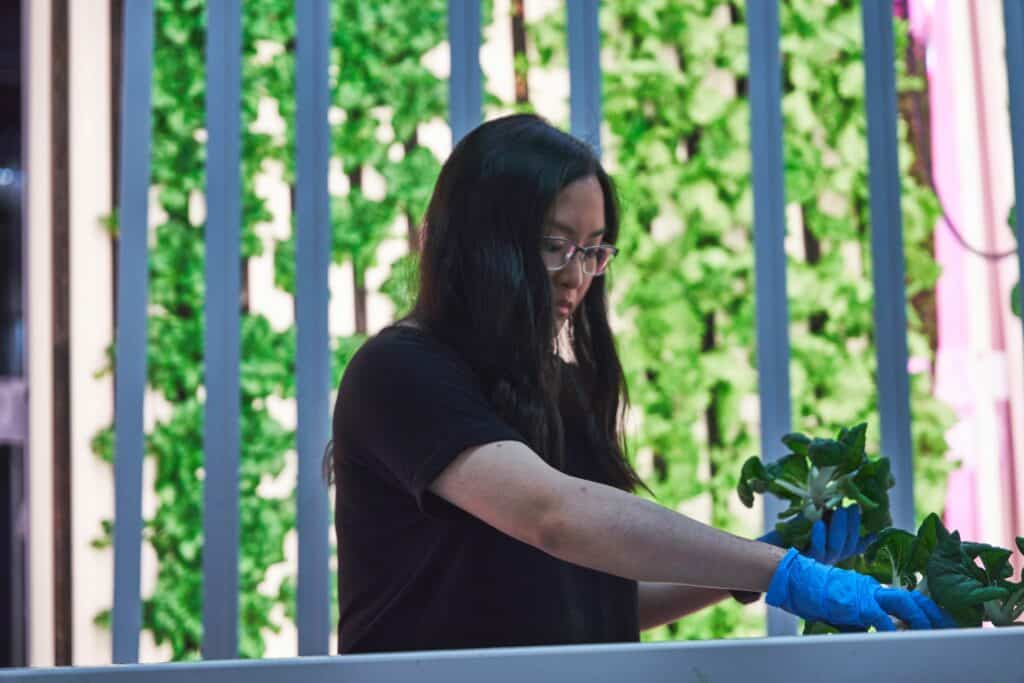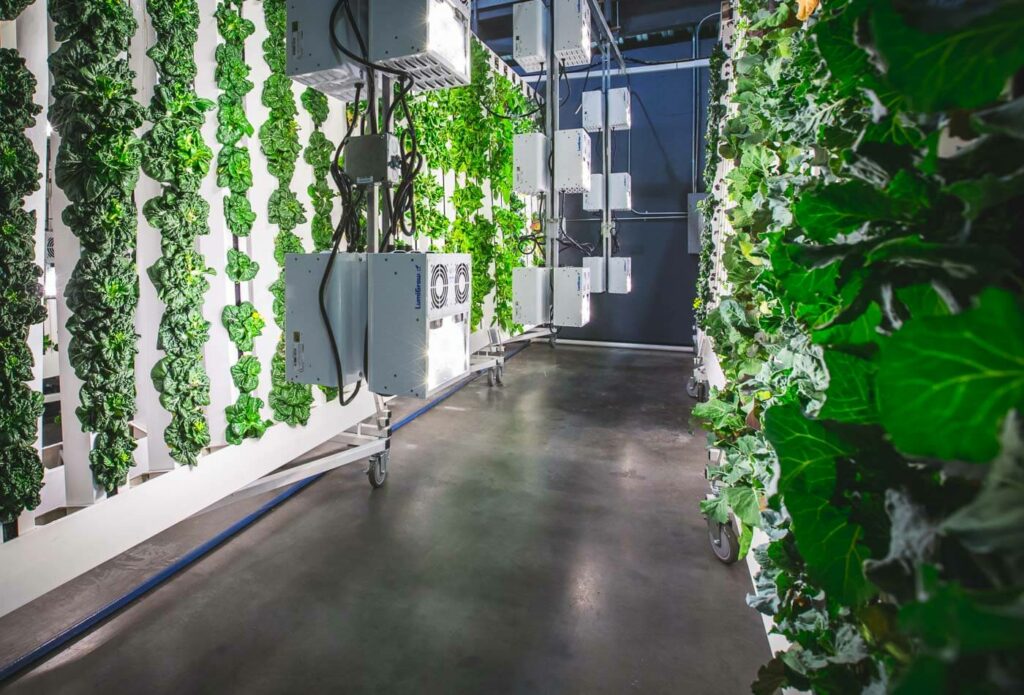Is Hydroponic Farming Profitable?
Hydroponic farming is experiencing a boom and getting a lot of attention in the press, but many are left with the question, “is hydroponic farming really profitable?”
Hydroponic farms are most commonly built indoors or in greenhouses. Both types of farms have been proven commercially, with dozens of farm operations around the world. These are highly productive facilities that are generating enough revenue to pay overhead expenses and provide healthy wages for farm workers.
In this post, we want to walk through the initial startup costs to see how difficult it is to get started. We will also take a look at the revenues and expenses for a typical indoor hydroponic farm, and get a better idea of the economics involved.
In this post:
- TheZipFarm we use in this example
- The startup costs involved
- Energy costs to run the farm
- The lighting strategy we are using here
- Production yields for basil and lettuce
- Why you should be interested in growing and selling herbs
- Revenue numbers
A New Food System Calls for New Practices
At Bright Agrotech, we believe in a distributed food system, not distributed food. In that type of a system, food production is localized to ensure that people have access to fresh, high-quality produce, and the farmers growing it are able to serve their markets profitably.
How is this possible? By leveraging controlled environment agriculture practices and resource-smart growing technology. The leading indoor system for indoor farmers at this time is the ZipFarm.Below you’ll find a detailed analysis of the ZipFarm indoor farm system.
Related: Growing in a greenhouse? Find resources for greenhouse growers here.
About the ZipFarm
In the example given here, we are looking at the ZipFarm Intro Bundle, which is our most popular indoor/vertical farm package. This is a small indoor farm that provides year-round production and is easily by managed by a single farm operator.
We have used our own data, as well as numbers from our farmers, to demonstrate profitability. However, since each market and each crop is unique, we have used conservative crop pricing estimates that should translate fairly well into your market.
>>> Explore your market with The Grower’s Guide to Local Food Markets.
To prove the model in your own region, we recommend doing some preliminary market research with local restaurants, food brokers, and retailers.
Startup Costs for an Indoor Hydroponic Farm
Here is how the numbers are stacking up:
- Footprint: 500 square feet
- Initial cost for the ZipFarm: $50k (not including upgrades to the facility)
The costs shown here include all the components for an indoor vertical farm with automated nutrient dosing and high efficiency LED lighting.
Included in this bundle:
- 90 ZipGrow Towers
- 3 ZipRacks™ for supporting the Towers
- 48 Lighting Units
- 1 Light Rack for supporting the lights
- 1 – 330 Gallon Nutrient reservoir, with UV filtration and automated nutrient management.
- 1 Seedling Starter Area with LED Lights
2 12″ HAF Fans
2 ZipGrow™ Tower Work Tables
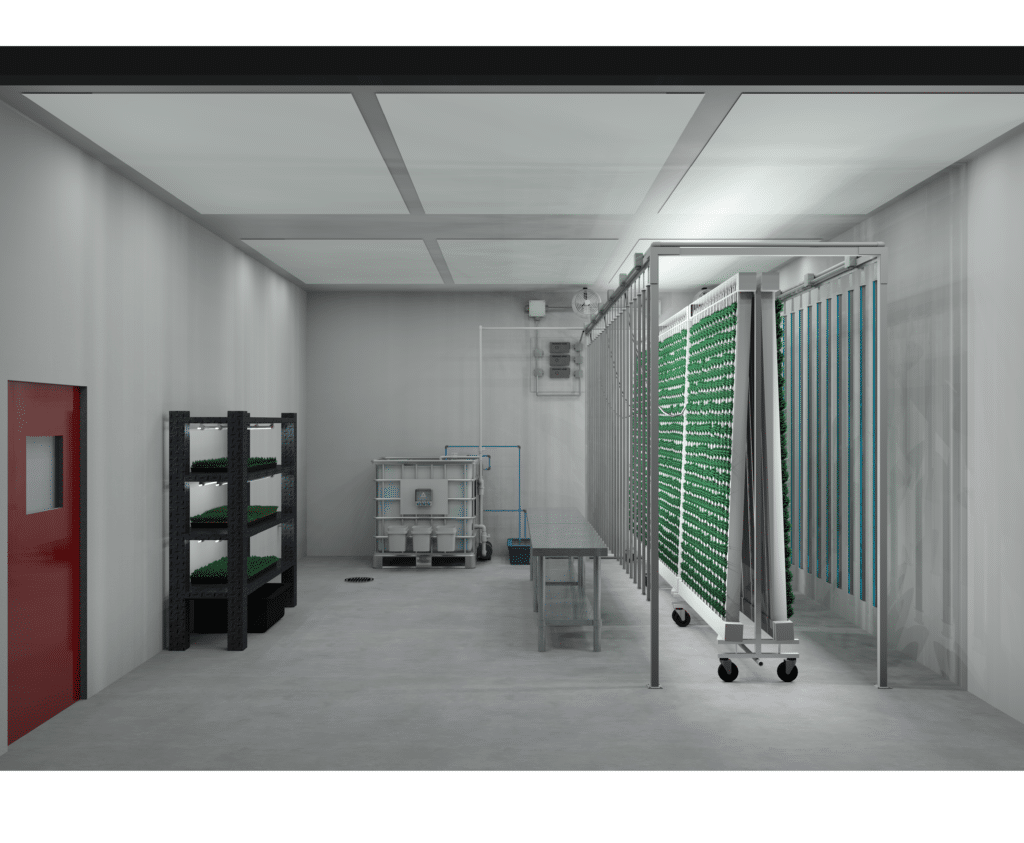
Interested in Becoming a ZipFarmer?
Q: How do you bring these costs down?
There are ways to bring this cost down, but the results are mixed. When we are asked to consult on custom lighting configurations, or stacked rack systems, we usually decline. We just don’t have the production data to show strong crop yields.
Stacked rack systems in particular can face challenges with air flow, heat and humidity. If you choose to go this route, or build a DIY indoor farm, you may spend quite a bit of time sourcing the parts and testing different configurations.
Market growers should be aware that DIY systems are more risky in the long run, since many problems will not be discovered until you are up and running and trying to make your deliveries.
Growing Indoors – Energy Costs for Hydroponic Lettuce
Lighting costs represent the highest ongoing expense for the ZipFarm.
In the example shown here, we are using 48 LED lighting units, each running at 200 watts.
- 48 lighting units
- 200 watts each to operate
- 18 hours of daily lighting
- Total = 172.8 kWh daily
In 2016, the national average for commercial energy was $0.13c/kWh.
This means that our daily cost for electricity is $22.46.
172.8kWh x $0.13/kWh = $22.46 daily
Costs and Benefits of LED Lighting Technology
Light availability is tied directly to crop yields, so we recommend finding a solution with high enough PAR values to ensure healthy production.
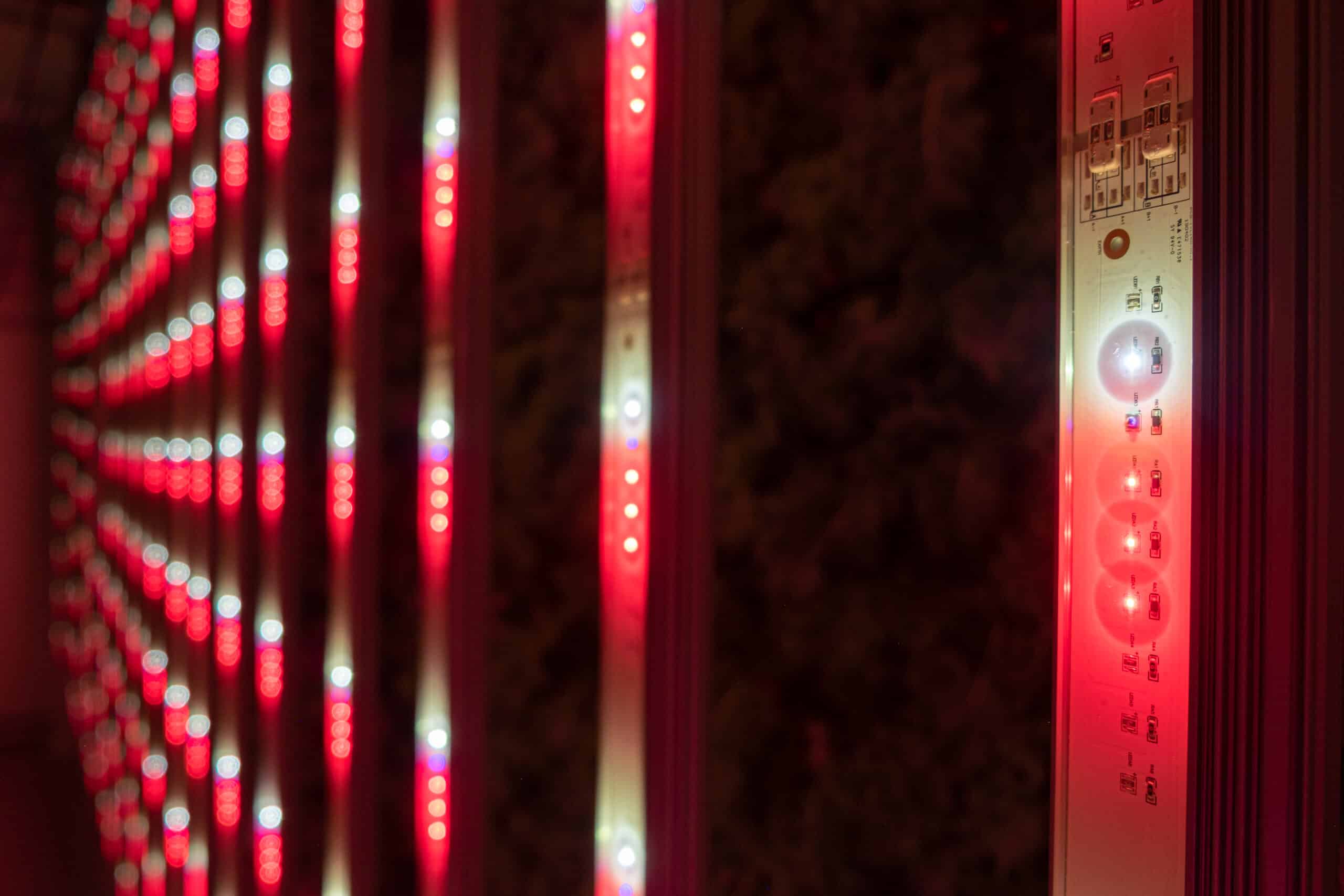
While a higher PAR value will increase energy costs, it will also help you achieve higher crop yields, boosting your bottom line and covering additional energy expenses.
The result is shorter crop cycles and higher yields.
Yield and Commercial Hydroponic Lettuce
We are getting 6.8 pounds of lettuce per ZipGrow Tower on a 3.6-week crop cycle.
If we dedicate half of the farm to lettuce, we will be using 96 ZipGrow Towers for lettuce production. The rest we will dedicate to herbs.
96 towers x 5.6 lbs each = 537.6 pounds each of lettuce and basil over a 3-week period.
Herbs and greens are the most appropriate crops for indoor farming, and they are also some of the most profitable plants to grow hydroponically. (Read more about best crops here. )
We use conservative numbers whenever possible. If you are curious about crop yields, please note that the ZipFarm has been performing above expectations in the field, and most of our farmers find that they have more produce than they anticipated (a good problem to have).
Commercial Viability of Hydroponic Farming – Grow Basil to Boost Your Profits
Herbs are not as big a market as the leafy greens. However, if you can find a market for your herbs they are highly profitable.
As an aside, if you have put together an Italian Pasta recipe recently, you might have noticed that most herbs you find on the shelves are pretty weak.
They often spend a week in transport before they get to the shelf, and then they sit there wilting. They are tired and they taste bland.
Indoor growers have a good opportunity to replace these lackluster herbs with a locally grown variety. In the above video, Ryan Sweeney of Localize farms describes how he is getting big crop yields.
What is the Average Profit Margin on a Hydroponic Farm?
If we dedicate half of the farm to basil and half the farm to lettuce, we will be using 96 ZipGrow Towers each for production. In this case, we are growing Genovese Basil, which performs roughly the same as the Red Leaf Lettuce we are growing.
96 towers x 5.6 lbs each = 537.6 pounds over a 3 week period.
In this case, we will assume that 50% of our production is for herbs, sold at wholesale price of $1/oz, and 50% of our production is lettuce sold a wholesale price of $3.50/lb.
| Crop | CropCycle | Yield | Price | Revenue |
| 96 towers lettuce production at 5.6 lbs/tower | 3.6 weeks | 537.6 lbs | $3.50/lb wholesale | $1,881 |
| 96 towers basil production at 5.6 lbs/tower | 3.6 weeks | 537.6 lbs | $16/lb wholesale | $8,601 |
| (3.6 week crop cycle) | $10,482 |
We try to use pretty conservative numbers. We also like to account for a 10% crop loss, especially in the early months of the farm. If you want to check the accuracy of our pricing numbers, we recommend getting pricing information from several sources:
- Retail produce managers
- Food coops and specialty stores
- Whole foods
- Food brokers
- Restaurants
Assuming you have a market for the crops, the general revenue numbers look pretty good. Herbs and greens are the most appropriate crops for indoor farming, and they are also some of the most profitable plants to grow hydroponically.
While indoor production may not solve all the world’s food problems, these are perfect crops for replacing out of state imports and building a small part of the local food economy.
Economics of Hydroponic Farming
There are plenty of places where these crops are in high demand, and the market pricing is healthy enough to justify a closer look.
If you are looking into the economics of commercial hydroponic farming, there are a couple assumptions worth pointing out:
- Hydroponic farms are already profitable. That’s why big corporations have built big greenhouses to grow the crops.
- Greenhouses and, increasingly, indoor farms are also profitable. The barriers are not the economics so much as access to the market.
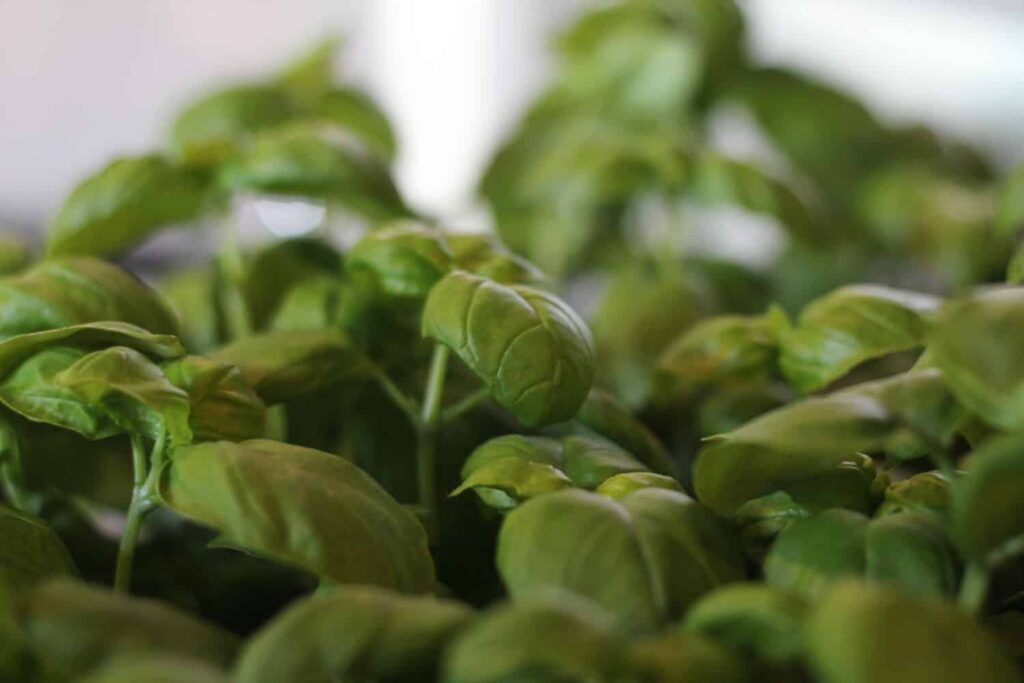
So far, we have covered:
- Initial startup costs
- Energy costs for operating the ZipFarm
- Production yields for lettuce and basil
- Wholesale pricing for an average market
- Projected revenues on a 3.6 crop cycle
But we are missing a few pieces of the puzzle. Specifically, we need to know how much our overhead costs are. How much does it cost for the labor to run the farm? How about the seeds, packaging, or nutrients? And we haven’t talked about rent or mortgage payments.
If you are looking for more details, check out this introduction to the ZipFarm, where we will cover these costs.
In particular, we will be answering several frequently asked questions:
- What are the average costs of running a hydroponic farm?
- How much labor is involved to bring the crop to harvest?
- What about lighting and energy costs?
- Are the crop prices realistic?
